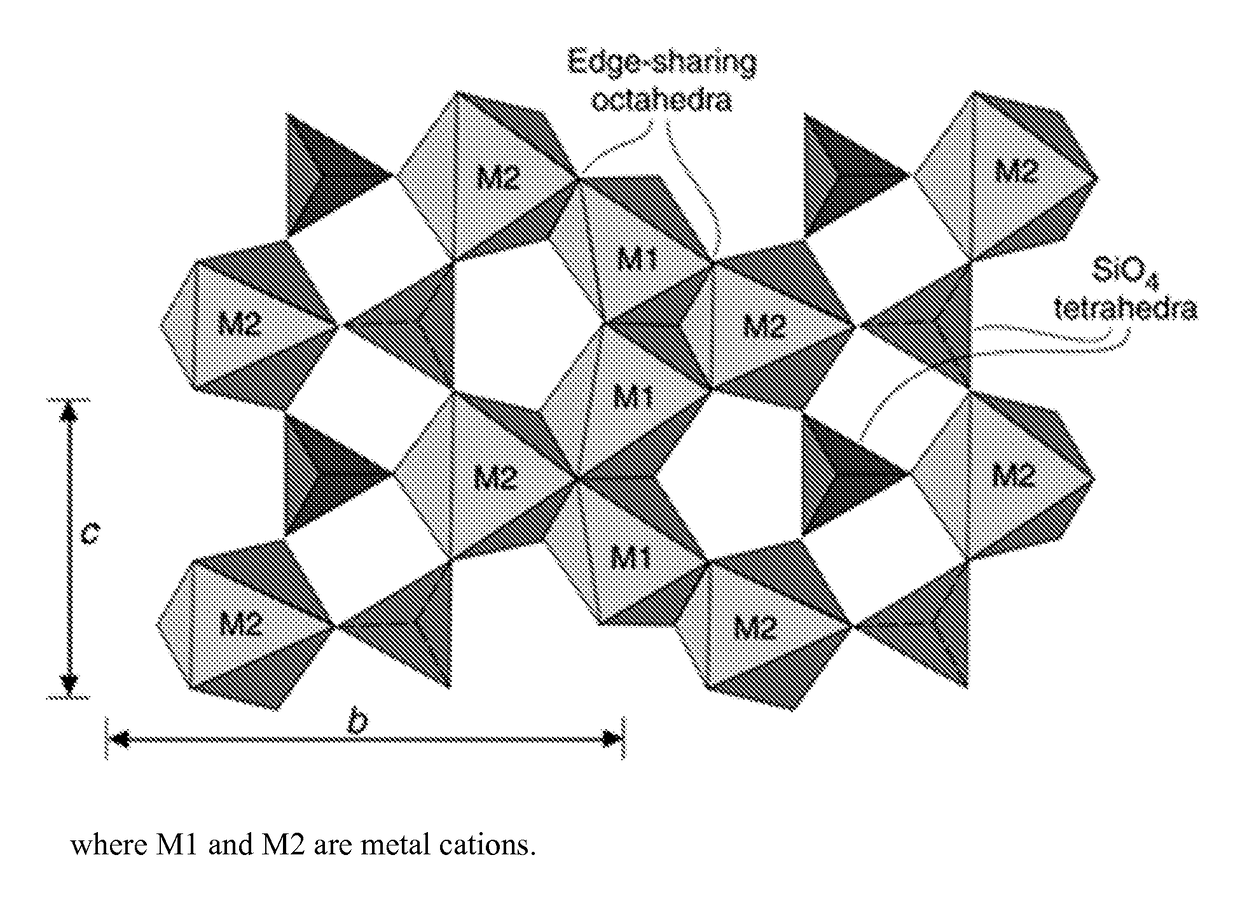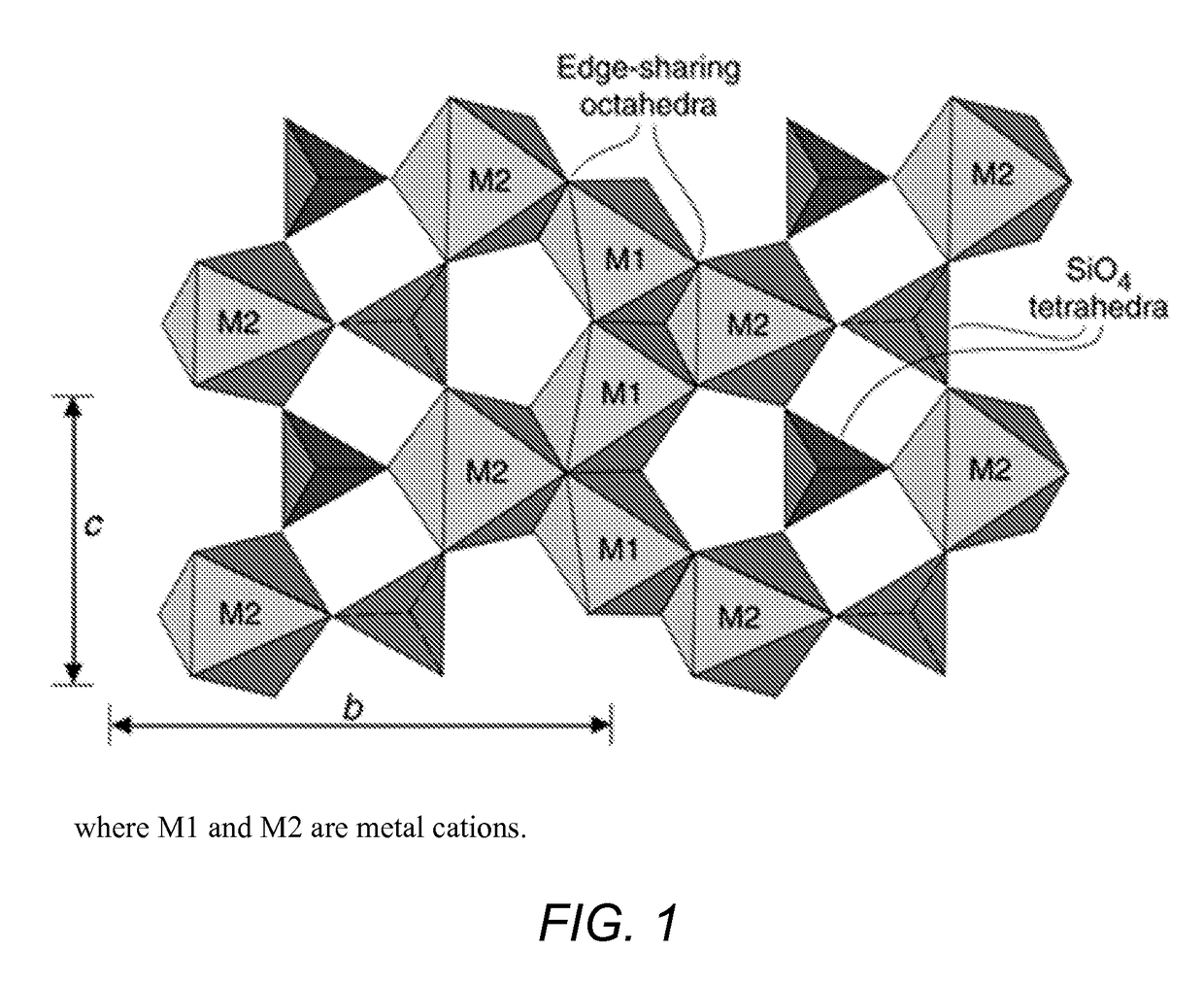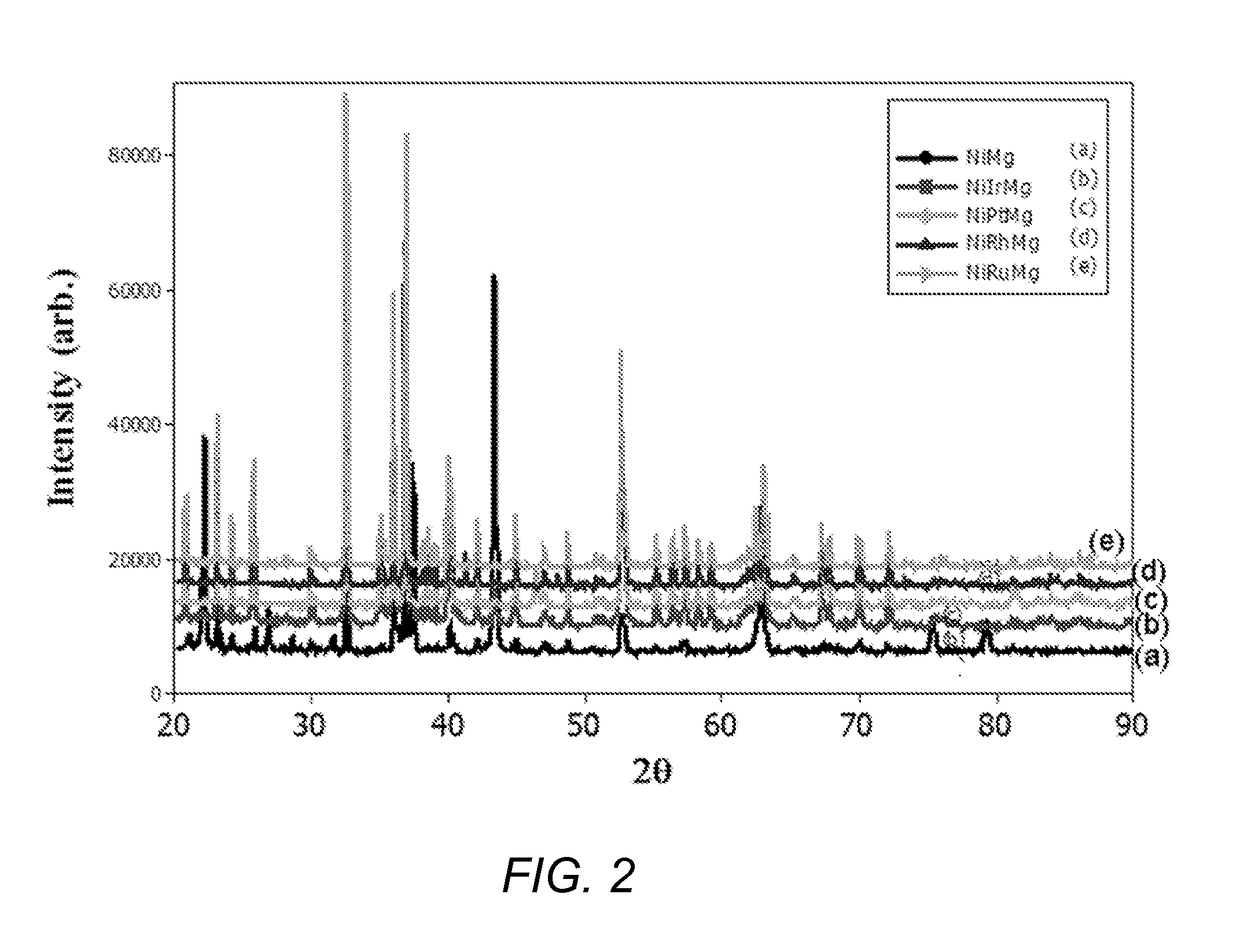Use of olivine catalysts for carbon dioxide reforming of methane
a catalyst and carbon dioxide technology, applied in the field of bulk metal oxide catalysts, can solve the problems of increasing associated costs, reducing efficiency production, and prone to sintering of current catalysts, and achieves the effects of enhancing activity, and reducing or avoiding significant coking and/or sintering
- Summary
- Abstract
- Description
- Claims
- Application Information
AI Technical Summary
Benefits of technology
Problems solved by technology
Method used
Image
Examples
example 1
Synthesis of Catalysts
[0051]All materials for the synthesis of the bulk metal oxide catalysts were obtained from Sigma Aldrich Chemical Company.
[0052](Mg0.5Ni0.5)2SiO4 bulk metal oxide catalyst. Nickel oxide (4.26 g 0.057 moles), magnesium oxide (2.30 g, 0.057 moles) and silicon dioxide (3.43 g, 0.057 moles) were mixed together to form a homogeneous powder of NiO, MgO and SiO2. The homogeneous powder was dried at 120° C. for 10 hours. The dried material was ground to a fine powder, and then pelletized (i.e., molded) with an infrared press at a pressure of about 10 tons to form cylindrical pellets. The formed pellets were calcined at 1300° C. at a ramp rate of 1° C. per minute, held at 1300° C. for 24 hours, and then cooled slowly to room temperature. The calcined pellets were crushed and ground to form a fine crystalline powder of (Ni0.5Mg0.5)2SiO4, hereinafter “NiMg” catalyst. FIG. 2 are X-Ray Diffraction (XRD) spectra of various bulk metal oxide catalysts of the invention. As show...
example 2
Dry Reforming of Methane with Bulk Metal Catalysts of the Invention
[0061]General Testing Procedure.
[0062]The effectiveness of catalysts of the invention towards carbon dioxide reforming of methane (CDRM, dry reforming of methane) were tested using a high throughput reactor system (hte, GmbH, Heidelberg, Germany). The reactors were of a plug flow design and constructed of steel with ceramic liners. The ceramic liner was 5 mm in diameter and 60 cm in length. The ceramic liner is considered to be inert and used to inhibit steel catalyzed cracking of methane. Catalyst pellets were crushed and sieved to a particle size of 300-500 micrometers. A required amount of catalyst sieve fraction was placed on top of inert material inside the ceramic liner. The catalyst in its oxidized state was heated to about 800° C. in the presence of 90% nitrogen (N2) and 10% Ar. A mixture of 45% CO2+45% CH4+10% Argon (Ar) was used as feed. The mixture was provided to the reactor in 4 steps with 5 minute inter...
PUM
| Property | Measurement | Unit |
|---|---|---|
| temperature | aaaaa | aaaaa |
| temperature | aaaaa | aaaaa |
| crystal structure | aaaaa | aaaaa |
Abstract
Description
Claims
Application Information
 Login to View More
Login to View More - R&D
- Intellectual Property
- Life Sciences
- Materials
- Tech Scout
- Unparalleled Data Quality
- Higher Quality Content
- 60% Fewer Hallucinations
Browse by: Latest US Patents, China's latest patents, Technical Efficacy Thesaurus, Application Domain, Technology Topic, Popular Technical Reports.
© 2025 PatSnap. All rights reserved.Legal|Privacy policy|Modern Slavery Act Transparency Statement|Sitemap|About US| Contact US: help@patsnap.com



